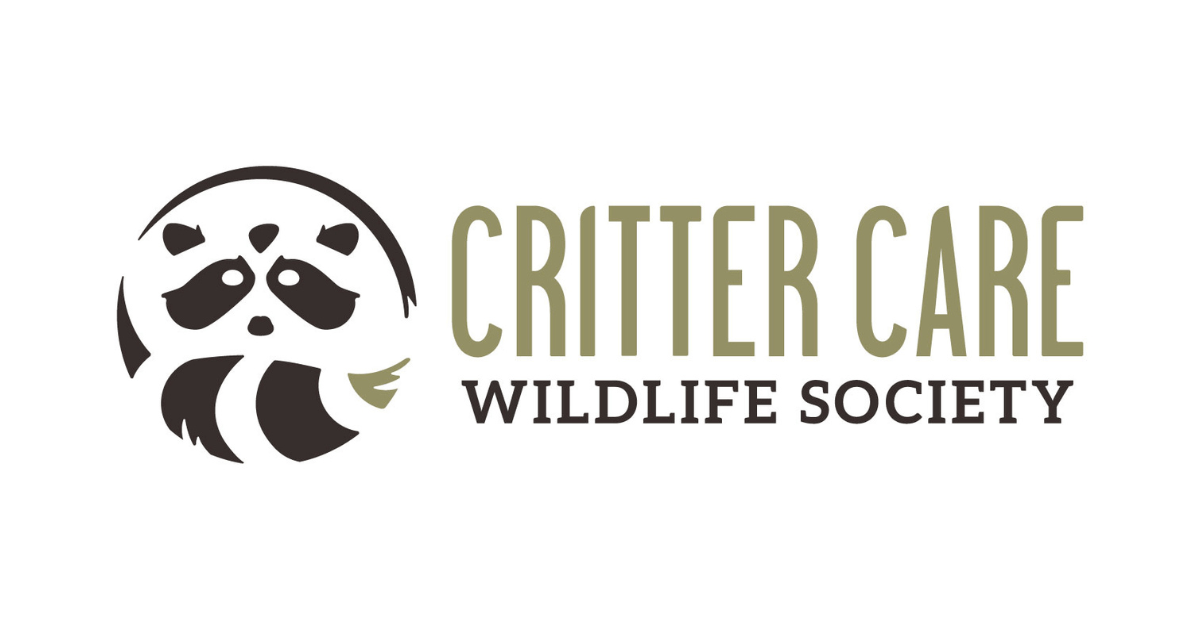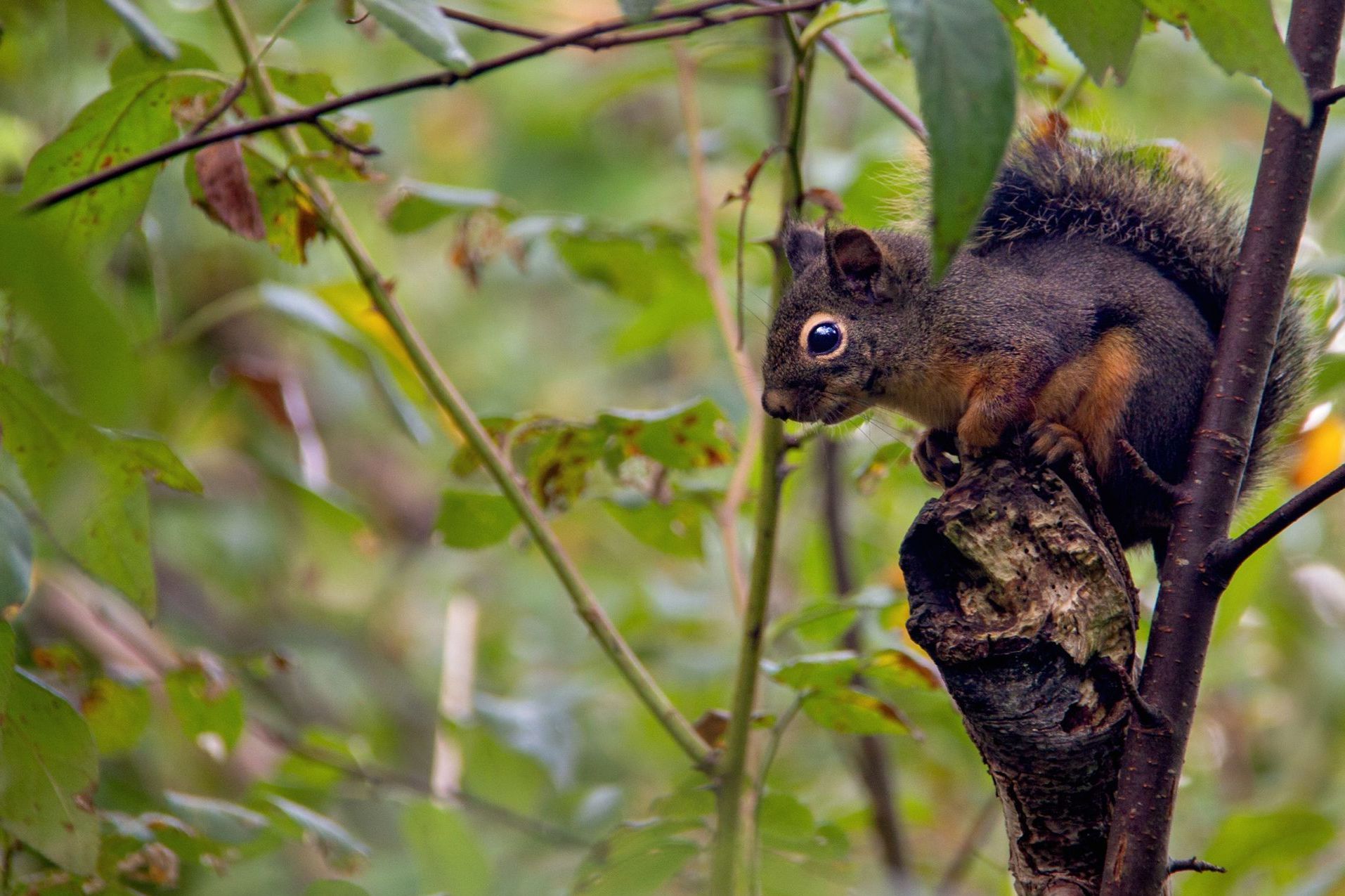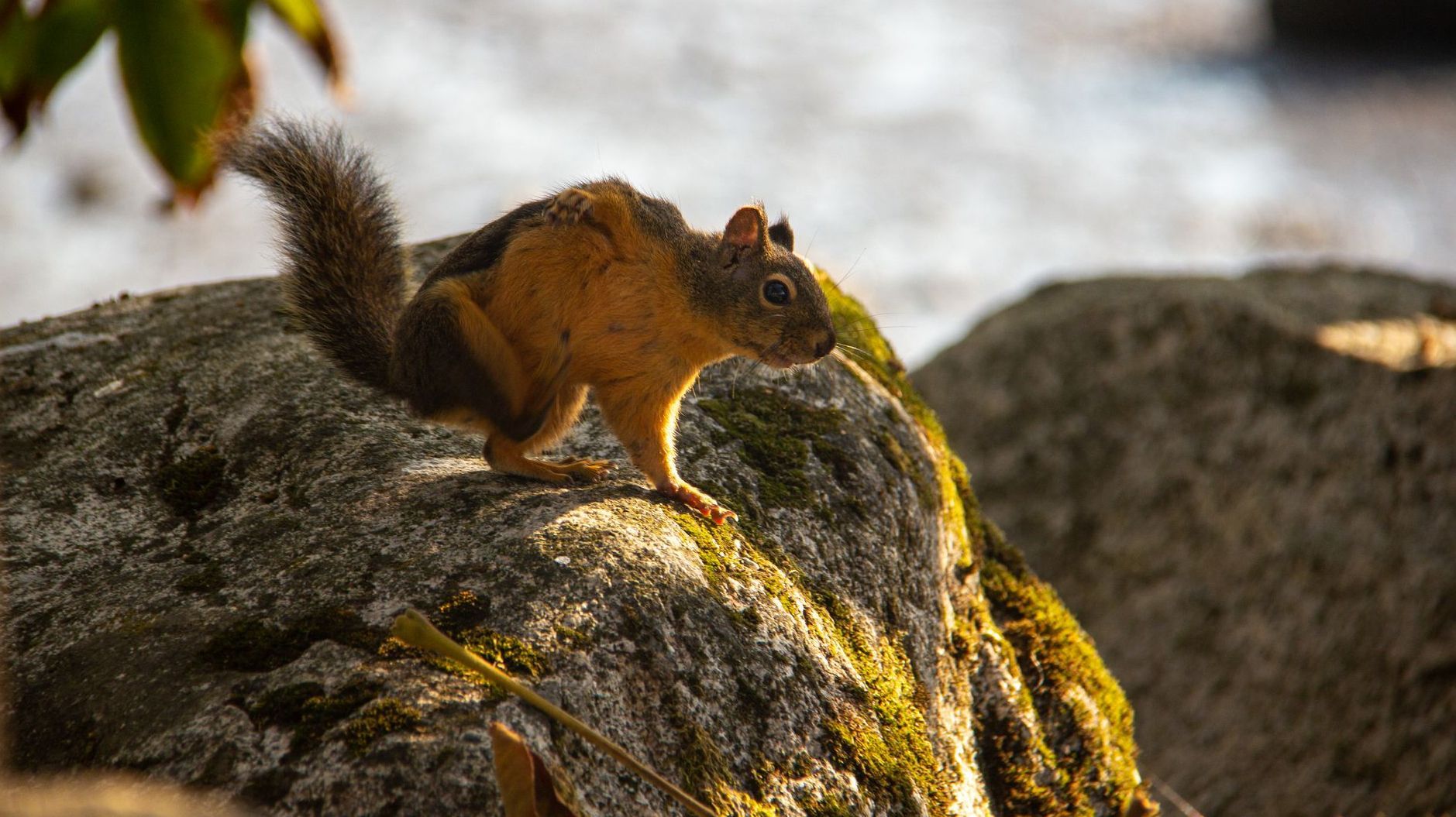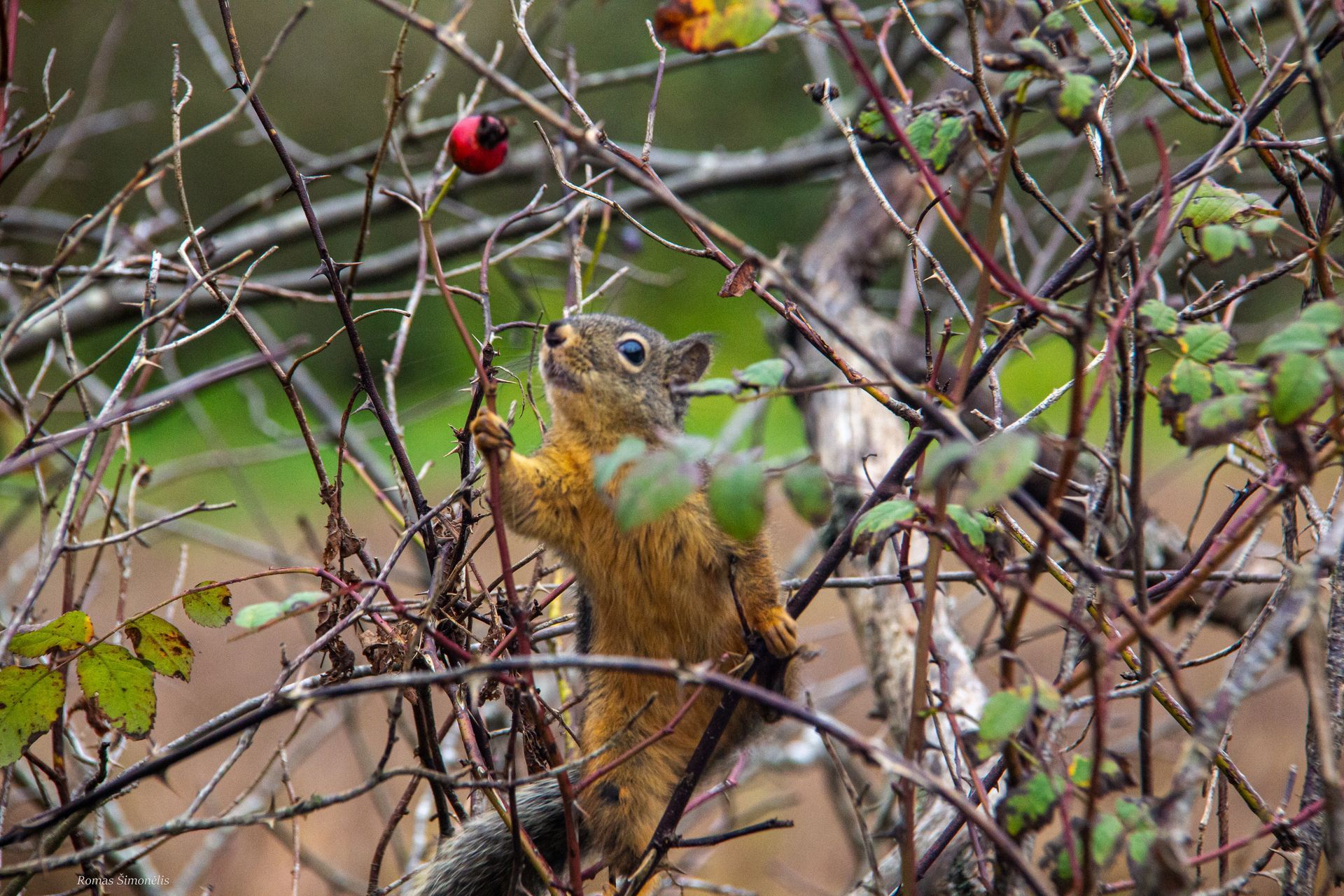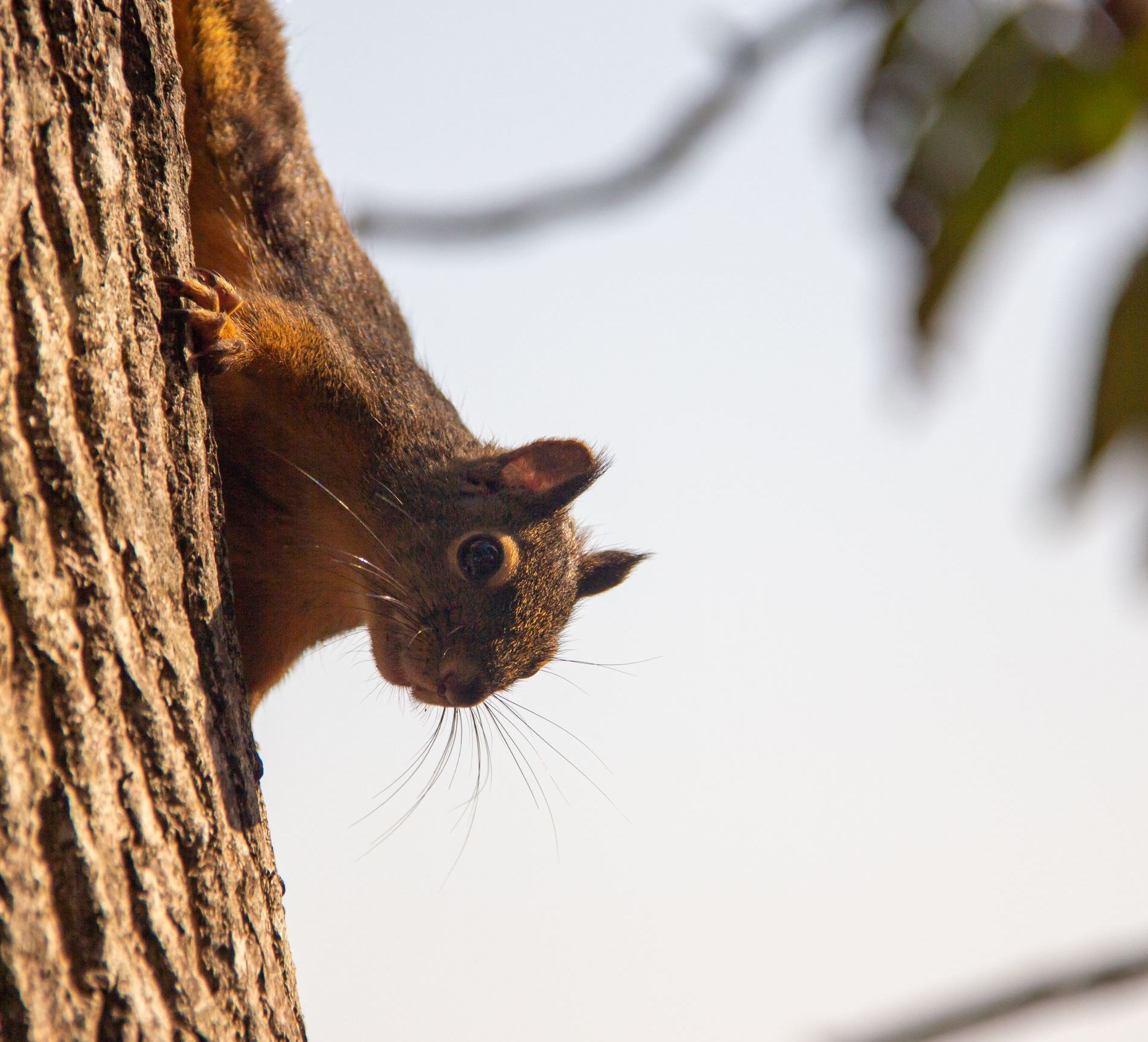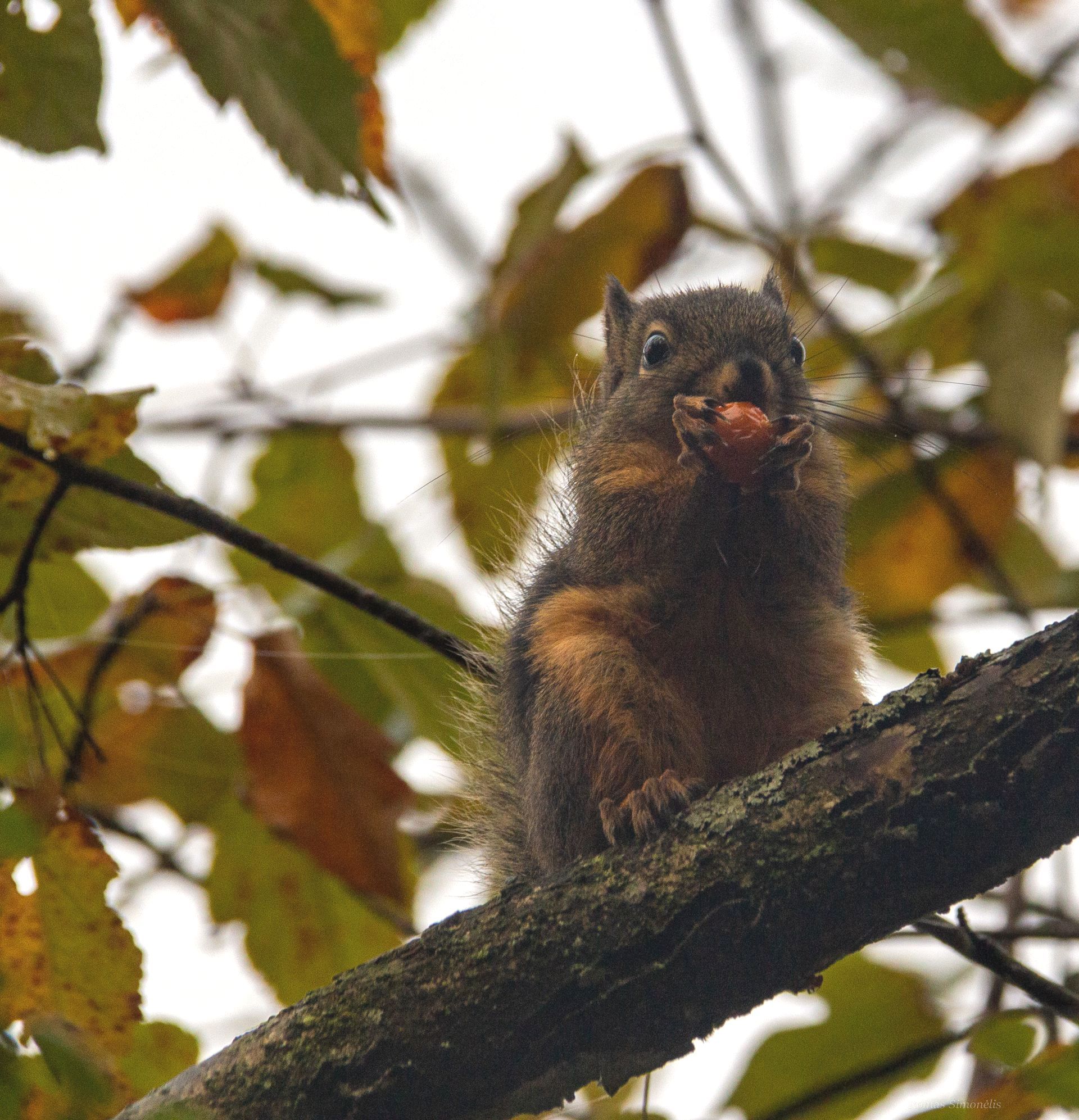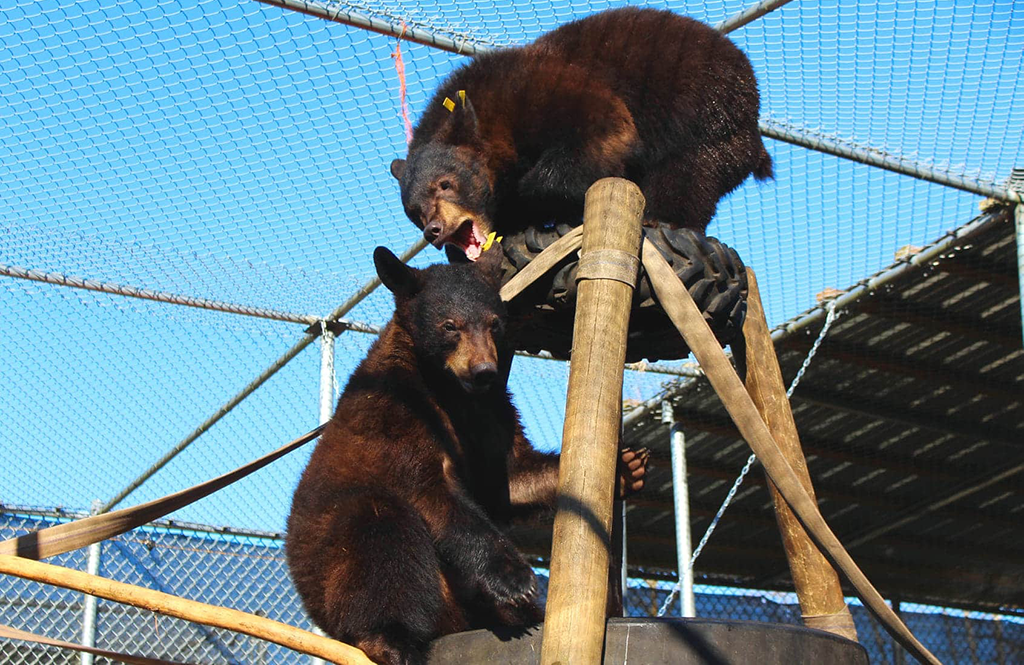The playful, The noisy, The Wild Douglas Squirrel
Habitat
The Douglas squirrel (Tamiasciurus douglasii) is found along the southwestern coast of British Columbia. The Northwestern States of Washington, Oregon, and down into central California. Douglas squirrels are found in the conifer forests along the Pacific Coast, preferring old-growth forests or second-growth forests, that have had time to mature. A single Douglas squirrel typically has a territory that spans 10 000 to 15 000 square meters, however, a mated pair will work together to defend a single territory. Beginning late in the winter or early spring and after a vocal courtship, male and female will form a monogamous bond. The pair can produce a litter of 4 kits that are born hairless and blind, after about three months, the kits are weaned, and after another few months, the kits will leave their family.
Appearance
You can recognize a Douglas squirrel by the black ear tufts, their grey fur, their reddish brown tail, and the white\orange rings around the eyes. They weigh, on average, 150 to 300 grams, and including their tail, can grow to a length of 37cm.
Diet
Douglas squirrels mostly eat the cones of coniferous trees, biting them off the branches and letting them fall to the ground, collecting them later on. They also enjoy eating acorns, berries, mushrooms, and even the eggs of songbirds. They eat some fruits, such as plums or strawberries, as well. They hoard their food in one location, which can be a tree, or they can hide their plunder underground, returning during the winter to feed on their stash. The Douglas Squirrel avoids eating on the ground, preferring to sit on tree branches to keep an eye out for natural predators like the:
- Long-tailed weasels
- Martens
- Bobcats
- Coyotes
- Foxes
- Owls
- Northern goshawks
Domestic cats also pose a threat to this small squirrel.
The Douglas squirrel can be very noisy while defending their territory, courting, or sounding an alarm, and have a large variety of calls they use communicating with themselves. It is believed that they also use chemical signals for further communication. They have excellent vision and hearing, as well as a good sense of smell. They use the whiskers above and below their eyes, and the other whiskers on their noses, and chins to feel the environment around them. They contribute to the ecosystem by spreading the spores of fungi through their feces,
the spores then go on to develop a symbiotic relationship with the root system of conifer trees, increasing water and nutrition absorption.
John Muir, who devoted an entire chapter to the Douglas squirrel in his, 1894 natural history classic, The Mountains of California, wrote,
“He is the mocking-bird of squirrels, pouring forth mixed chatter and song like a perennial fountain; barking like a dog, screaming like a hawk, chirping like a blackbird or a sparrow; while in bluff, audacious noisiness he is a very jay.”
